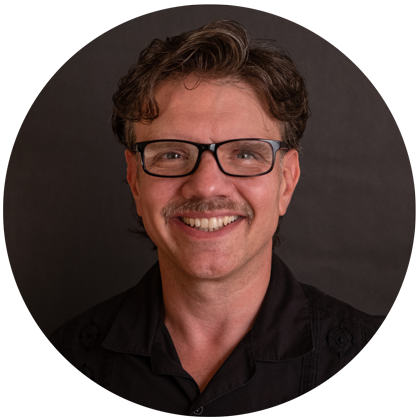During times of great burden, people typically feel overwhelmed. These experiences are equally physical emotional, and cognitive. The brain and body equally share the burden of the stress we experience in our lives. The name for the cumulative effect of all forms of stress is called the Allostatic Load.
I’d used this term in de-escalation trainings before. A former colleague of mine joined me in co-facilitating a number of Trauma-informed trainings for mental health and general medical practitioners and this phrase was part of my colleague curriculum. I’d heard it before but during this series of trainings, the repetitive exposure to these two words in her work on the neurobiology of stress resonated with me. I recall a few other people appreciating learning this new concept to understand the physical toll of cumulative stress.
Similarly, this article is simply meant to share this term as I believe that learning these words and using them collectively provide a form of healing and connection that help us pivot from the moments of great burden where & when we get stuck. Being able to “name” that which we could not yet describe can is empowering. There is a form of satisfaction that comes with finding a way to name that which had been unnamable.
What’s in a name? The subtle healing behind correctly naming the unknown
If you’ve ever been ill and went to a medical provider and they gave you a diagnosis (a “name”) that accurately identified your ailment, you started to feel a little bit better. Even before you took any prescribed medicine or treatment, a form of certainty was provided in this “naming.” It can be calming.
On the opposite side, the unknown is not calming. Similarly, an incorrect or minimized diagnosis is not helpful either. The term “stress” does not accurately identify all that a person may be going through right now. The cumulative impacts of all of the personal (medical, financial, social, emotional, etc.) instabilities and threats experienced currently by a great number of people goes far beyond the immediate or secondary impacts of this pandemic. There is a toll to the suffering that may exist mostly in shadows or in people’s minds, but it will last long past the finding of vaccines.
It is rather dark to consider. The naming of what is going on does not fix anything. It simply serves to shine a brighter light on what we are experiencing. Hopefully raising awareness helps. Hopefully the awareness eventually leads to easing of burdens.
Terms like “Social Distancing” and “Flatten the Curve” have provided a few different forms of safety during this pandemic. First, these phrases helped people understand our current scientific approaches to managing and mitigating this crisis situation. Secondarily, these terms now allowed people to communicate about the new social, emotional lived-experience we are sharing through the “new normal.”
An Example of using the phrase Allostatic Load
I encourage people to think about incorporating the words “Allostatic Load” into your regular vocabulary, even in the simplest of ways.
Example: You’ve returned from work (or are communicating with a loved one during your busy workday) and the following conversation begins:
Loved one: “How is/was your day?”
You: “Uh, tough … I’m exhausted. It’s all getting to me”
Loved one: “Say more.”
You: “It’s a long story.”
Loved one: “Are you upset?”
You: Yes and No. My Allostatic Load is overwhelmed. I’m not upset with you, but life is really upsetting right now. Everything seems especially hard. If you want to know what’s up, look up the definition of Allostatic Load. That’ll explain it better than I can right now.”
Despite the best intentions of a loved one greeting us with apparent support, sometimes it is too burdening (for you and potentially for them) to talk about all that you went through today and beyond. You can begin to feel it over time, but you may not initially recognize it as it is coming on cumulatively. You are exhausted – – mentally, emotionally, & physically from the compounding effects of the complicated and abnormal days-on-end through this pandemic. For some, the pandemic only expands pre-outbreak stress and overwhelming elements of adverse life experiences and multiple forms of bias, inequity, and inequality.
Research & next steps
Like other concepts, it is worth going to trust-worthy sources to gather more information. This article is the place to begin:
Lee, Do & Kim, Eosu & Choi, Man-Ho. (2014). Technical and clinical aspects of cortisol as a biochemical marker of chronic stress. BMB reports. 48. 10.5483/BMBRep.2015.48.4.275.
Citation Preview: Stress is now recognized as a universal premorbid factor associated with many risk factors of various chronic diseases. Acute stress may induce an individual’s adaptive response to environmental demands. However, chronic, excessive stress causes cumulative, negatively impacts on health outcomes through “allostatic load”. Thus monitoring of quantified levels of long-term stress mediators would provide a timely opportunity for prevention or earlier intervention of stress-related chronic illnesses. Although either acute or chronic stress could be quantified through measurement of changes in physiological parameters, such as heart rate, blood pressure, and levels of various metabolic hormones, it is still elusive to interpret whether changes in circulating levels of stress mediators, such as cortisol, reflect acute, chronic, or diurnal variations. Both serum and salivary cortisol levels reveal acute changes at a single point in time, but the overall long-term systemic cortisol exposure is difficult to evaluate because of circadian variations and its protein-binding capacity. Scalp hair has a fairly predictable growth rate of approximately 1 cm/month and the most 1 cm segment approximates the last month’s cortisol production as the mean value. The analysis of cortisol in hair constitutes a highly promising technique for the retrospective assessment of chronic stress.

